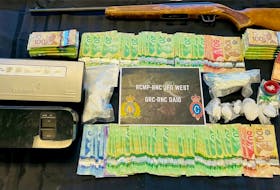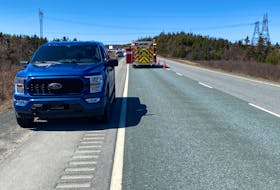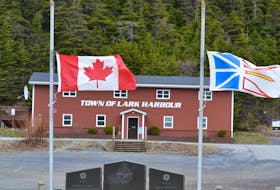
“I’m a garbage expert,” Max Liboiron declares.
And plastics are her enigma. When it comes to garbage, she says, they’re the hardest problem to solve.
Liboiron came to work at Memorial University about a year and a half ago and is the chief investigator of a research team looking into marine plastics in local waters.
"When I came up here there was almost no information about marine plastics in and around Newfoundland and Labrador,” she says.
Related stories:
Most of the plastics in the ocean are micro-plastics, meaning they’re smaller than 5 mm, or smaller than a grain of rice.
“Because of the rocks here it makes them really hard to find through normal methods,” Liboiron says.
In other areas where she has worked, such as Bermuda, Liboiron could just go to the beach and, lo and behold, there would be plastics.
She and her team are inventing technology that gets buried in rocks here that collects micro-plastics that can’t be seen. In 2015, Liboiron’s team looked inside 205 cod guts that came from Petty Harbour and St. Philip’s for micro-plastics, as well.
“It was one of the lowest ingestion rates ever recorded in fish for plastic,” says Liboiron.
Usually about 30 per cent of fish checked will have plastics in them.
“Ours was 2.5 per cent, which is extremely low, which is very, very good news for the Newfoundland fishery,” Liboiron says.
“We think that the reason is because there are plastics in the Arctic, but not nearly as many as coming up from, say, the Gulf.”
Next year they want to check local cod from the South Coast that will feed in Gulf Stream waters and compare it to cod from Arctic waters.
But fish aren’t the only places to look. Birds such as fulmars and dovekies are known to ingest more plastics than fish.
The researchers are also working with groups such as Scouts Canada that do beach cleanups, and are training them to record data on plastics they find. The goal of this work is ultimately to reduce plastics in the ocean.
“All the plastics here have been here since they’ve been invented and they’ll outlast the human species,” Liboiron says.
So how do you tackle such an enduring problem? One idea is a kind of travelling marine vacuum that sucks in plastics from the water, but Liboiron has publicly written against this idea.
“There are a few fatal flaws with this project, the first one being that they don’t pick up plastics smaller than five mm, which most plastics are, and the second of which is they’re going to kill a lot of animals,” she says.
“To solve the science problem you have to change the business model.”
That means putting less plastic in the oceans. The most successful mitigation method came when industry startied using vacuums to remove products from trucks onto ships rather than shovels, according to Liboiron. When that was done the small plastic pellets associated with industry that pepper the oceans were massively reduced.
Liboiron is giving a public discussion of her findings of plastics in local waters, as well future projects, along with co-researcher Charles Mather. They’ll look for the public’s feedback. Their talk takes place tonight at 7 p.m. at the Petty Harbour Recreation Centre.








